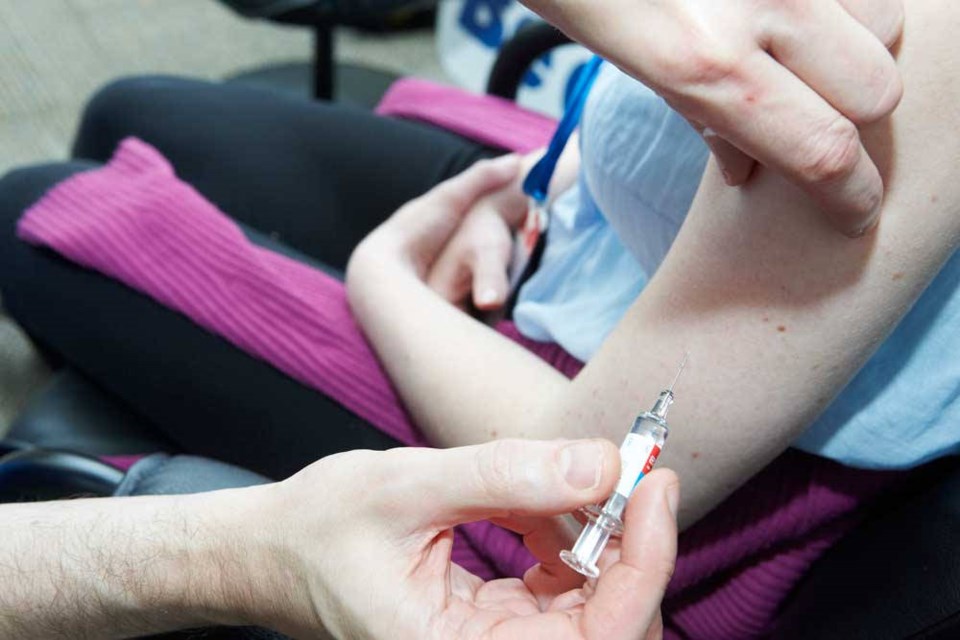Flu immunization rates are down this year, but it looks like peak influenza season has passed.
According to information from the Kelsey Trail Health Region, 10,444 people were immunized this season. That’s down from 10,580 in 2015-16 and 13,315 in 2014-15.
“Usually what happens is when people see a disease outside – infections, coughing and sneezing, they run to get the vaccine. But this year we are seeing that the season is a bit milder,” explained Dr. Mohammad Khan, KTHR’s medical health officer.
“Analysis done at provincial and national levels found that the majority of the virus circulating in the community is covered in the vaccine. So the vaccine is very effective.”
Staff immunization policy
Khan also noted that changes in employee policy have affected immunization numbers. In 2014-15, an ‘immunize or mask policy’ was implemented for KTHR staff.
“Unfortunately what happened in that year, although 96 per cent of the staff were immunized, there was mismatch in the vaccine,” he said. “The vaccine became almost ineffective so that we had a lot of infections, a lot of outbreaks in our health region.”
The ‘immunize or mask policy’ was only in effect that year. After, KTHR staff vaccination became voluntary.
This year’s flu status
This season was mild and the vaccine was effective.
“KTHR is among only two or three health regions in the province who don’t have any outbreaks in our health facilities, so we are probably doing a good job.”
Khan commended the work of staff in long-term care facilities for effective infection control.
He noted that the health region receives information every Wednesday about possible outbreaks from schools and workplaces.
“If they see more than 10 per cent of their employees or students in the school who are absent because of influenza-like illness, they report it to public health and this is a red flag for us that something is going on.”
The medical health officer said that infections usually peak in February, four to six weeks after the holidays.
“We think that the influenza season has already peaked.”
The KTHR does still have flu vaccines available, as they sometimes get reports of influenza as late as May or June.
Khan also recommended that young, healthy people get vaccinated, as they may have high-risk people around them: the very old, very young, pregnant women and people with chronic health conditions.
“If they’re not getting it for themselves, they should get it for the people around them, because influenza could be a nuisance for healthy people, but it could be very dangerous for high risk people.”
Data through the years
The data provided by KTHR spanned from 2004 to Jan. 31, 2017. The year with the fewest vaccinations was 2009-10, with only 6,548. However, 16,162 doses of the H1N1 vaccine were administered that season.
From 2004 to 2009, vaccination rates varied from 7,203 to 7,978.
From 2010 to 2017, the low was 9,292 and the high 13,315.
In 2015-16, pharmacists began administering flu vaccines, but pharmacy-specific data from that year is unavailable. This season, pharmacists administered 1,943 vaccines.
The KTHR serves more than 40,000 people.




